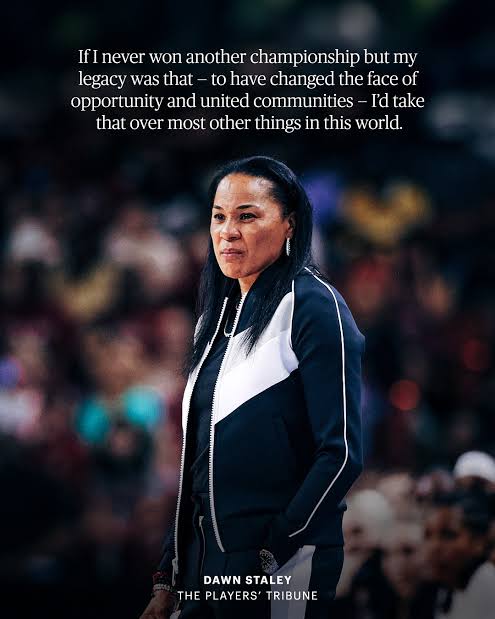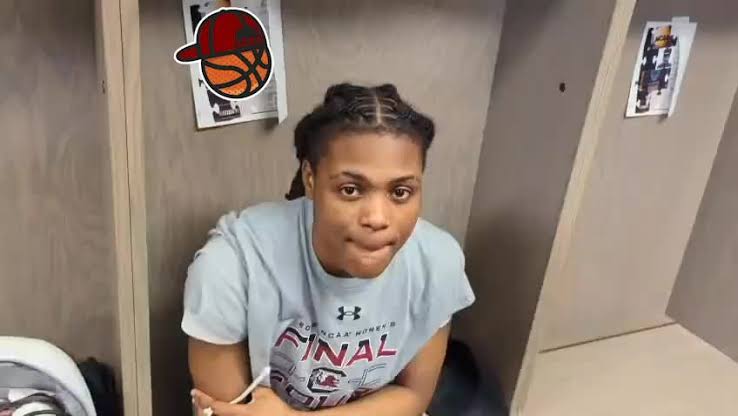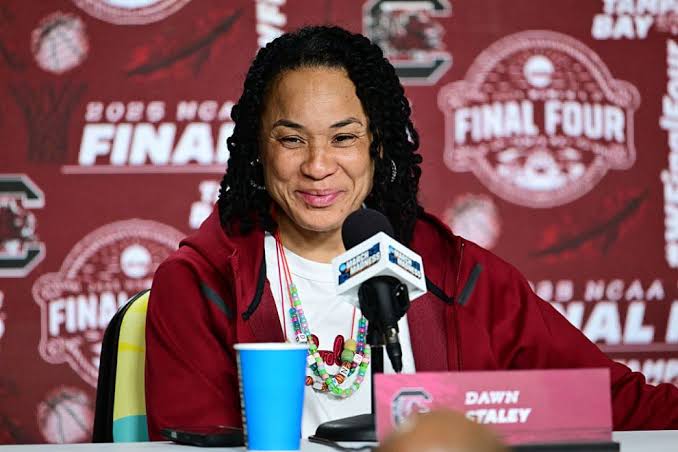A wave of intrigue has swept through women’s college basketball following a leaked dossier that points to South Carolina head coach Dawn Staley spearheading a covert initiative so ambitious—and so volatile—that insiders warn it could tilt the sport’s competitive balance. Whispered about in booster circles and now surfacing in a series of anonymous tips, the “dark plan,” as some have dubbed it, revolves around Staley’s alleged blueprint to fuse unprecedented NIL leverage with an international recruiting pipeline, creating a juggernaut roster whose depth and versatility the game has never seen.
Sources familiar with internal discussions claim Staley has tapped a network of global scouts—stretching from club teams in Spain and Australia to prep academies in Nigeria and Brazil—to identify elite teenagers who have largely flown under the Power‑Five radar. The strategy: secure early commitments, then pair those prospects with lucrative NIL frameworks shaped by South Carolina‑affiliated collectives. Unlike heavyweights that court only polished U.S. stars, Staley’s reported plan focuses on players willing to develop for a year or two while monetizing their brand abroad and stateside, effectively turning Columbia into a global finishing school.
The potential upside is enormous. International recruits often arrive with pro‑style fundamentals, adding tactical diversity to an already disciplined Gamecocks system. Combine that with top‑tier American transfers lured by NIL packages, and rival coaches fear Staley could field a rotation 12‑deep with interchangeable scorers and lockdown defenders. One SEC assistant bluntly labeled it “unpredictable danger,” predicting scouting nightmares as opponents try to game‑plan for lineups that can morph from brute‑force rebounding units to five‑out sniper formations at will.
Yet the scheme carries risk and controversy. Critics argue it weaponizes NIL beyond its intended spirit, blurring the line between amateur opportunity and semi‑professional free agency. They also note the cultural challenges of integrating a roster spanning multiple continents: communication barriers, visa logistics, and academic support hurdles could create friction. Furthermore, compliance officers worry that coordinating overseas sponsorship deals may invite NCAA scrutiny or congressional attention, especially if foreign companies with limited U.S. presence become primary benefactors.
Publicly, Staley remains tight‑lipped, dodging questions about the leaked documents by emphasizing South Carolina’s commitment to “growth, diversity, and opportunity.” Athletic‑department officials echoed those talking points, insisting all recruiting and NIL activities fall within guidelines. Still, the program’s recent hires—an analytics guru fluent in Spanish leagues, a player‑development coach with WNBL connections, and a compliance liaison specializing in immigration law—have only fueled speculation that the blueprint is already in motion.
For fans, the mystery is electric. Supporters envision an era of sustained dominance, while skeptics warn of a talent concentration that could sap parity from the NCAA tournament. As the early‑signing period approaches, every international social‑media post greeted with a Gamecocks emoji is dissected for clues. Whether Dawn Staley’s clandestine strategy culminates in a revolutionary dynasty or collapses under its own complexity, one truth is undeniable: women’s basketball is bracing for a seismic shift that may redefine how elite programs assemble, fund, and deploy talent on the road to March Madness.



